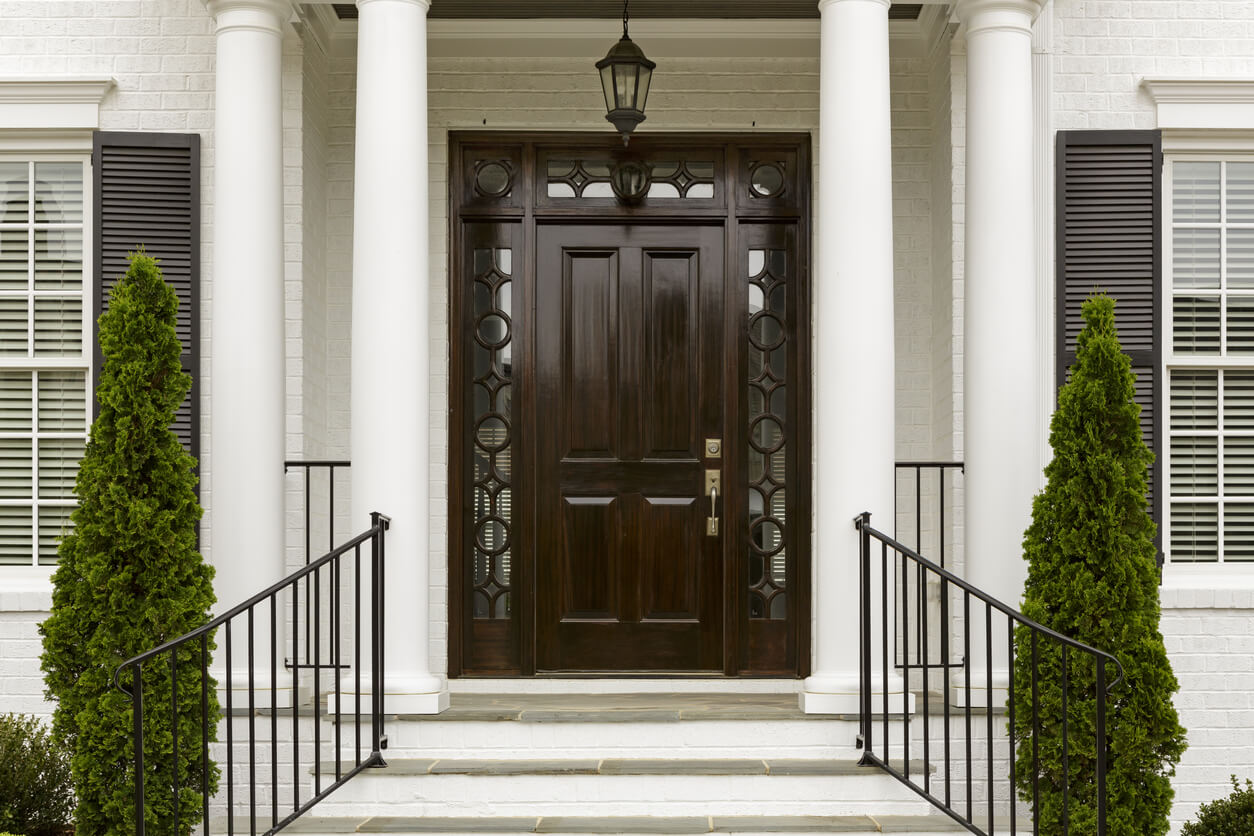Installing New Exterior Doors
Replacing exterior doors is a quick upgrade that brings long-term benefits. It enhances your home’s curb appeal, increases energy efficiency, and boosts security, all in just a few hours of installation time. Whether you’re looking to replace a worn-out entry door or want a new patio slider, the right door makes a big difference in both comfort and style.
Common reasons for replacement include damage like cracking, swelling, or rotting, as well as air leaks or difficult operation. A door that no longer closes properly or allows drafts can reduce energy efficiency and home security. Fortunately, replacing your door can solve all of those issues and give your home an instant visual refresh.
Common Materials Used for Exterior Doors
Your door’s material affects how it performs and how much upkeep it needs. Here’s a quick breakdown of the most common options:
- Steel: Strong, affordable, and energy efficient. Good for security and low maintenance, but can dent or scratch.
- Fiberglass: Durable, weather-resistant, and mimics wood. Low upkeep and energy efficient. Ideal for harsh climates.
- Wood: Offers a traditional, custom look. It’s sturdy and secure but needs regular sealing or painting to avoid warping.
- Aluminum: Rust-resistant and low maintenance. Often used for storm or patio doors. Custom entry doors are available but pricey.
- Vinyl: Cost-effective and weather-resistant. Common for patio doors. Easy to clean and maintain.
- Wrought Iron: Heavy-duty and decorative. Adds security and curb appeal. Often paired with glass for natural light.
Whether you’re installing a sleek new front door or replacing a worn patio slider, an exterior door upgrade can dramatically change the look and feel of your home.
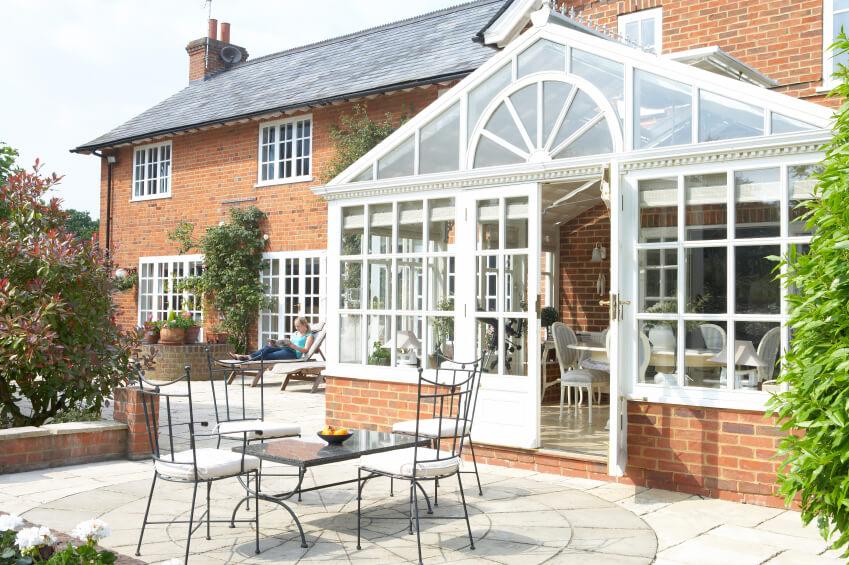
Frequently Asked Questions
How Does a Door Replacement Work?
Door replacement typically begins with an inspection and measurements to ensure the new door fits properly. The homeowner selects the door type, material, and style, including optional accessories like sidelights, transoms, or smart locks. Then, a contractor removes the old door, makes any necessary frame repairs or adjustments, and installs the new unit.
There are two main types of installations:
- Pre-Hung Doors: These come with the frame, hinges, and hardware attached. Ideal for new construction or when replacing damaged door frames.
- Slab Doors: These are just the door itself and are installed in an existing frame. Best for simple upgrades where the structure is sound.
Most installations are completed in one day, depending on complexity and customization. Professional installation ensures proper sealing and alignment for long-term performance.
Frequently Asked Questions
What Are the Different Types of Doors?
There are many types of doors available, each offering different benefits in terms of function, style, and placement in the home.
Different areas of your home call for different door styles. When choosing a new exterior door, consider both the location — front, back, or patio — and how the door should function in that space. Some doors maximize security or light, while others focus on airflow or design.
Common Door Styles
- Flush Door: Flat and smooth, with a minimalist look. Best for modern homes.
- Paneled Door: Features raised or recessed panels. Classic design, fits many home styles.
- Full Glass Door: Often used for patios. Provides maximum light and visibility.
- Half Glass Door: Combines light with privacy. Common for front or back doors.
- Sliding Glass Door: Saves space and offers a wide view. Ideal for patios or decks.
- Glass Paneled Door: Includes decorative or textured glass sections. Adds style while allowing light.
- Double Doors: Two doors that open from the center. Great for large entryways.
- Louver Door: Includes horizontal slats for airflow. Typically used in utility spaces.
- French Doors: Hinged double doors with glass panels. Elegant and perfect for patios or balconies.
- Storm Door: Installed in front of an exterior door for weather protection.
- Folding Doors: Multiple panels that fold open. Useful for wide outdoor access.
- Sidelight Doors: Feature narrow glass panels on one or both sides. Enhances curb appeal and lets in light.
Match the style and function of the door to the area of the home where it will be installed. For example, a sliding or French door works well for patios, while paneled or sidelight doors enhance front entryways.
Frequently Asked Questions
Choosing the Right Door for Your Home
Picking the right door depends on a mix of practical and aesthetic considerations. The ideal door should complement your home’s style, stand up to your climate, and meet your performance needs, whether that’s insulation, soundproofing, or security.
Key Factors to Consider
- Durability: Choose materials that can withstand your local weather and require minimal maintenance.
- Aesthetic Appeal: Match the door’s color, style, and hardware to your home’s exterior or interior decor.
- Functionality: Consider how often the door is used, whether it needs a wide opening for accessibility, or if glass panels are desired.
- Budget: Costs vary based on material, design, and labor. Determine how much you want to spend upfront and on long-term maintenance.
Consulting a professional contractor can help weigh these factors and make sure your door meets all of your goals.
Frequently Asked Questions
Topics to Explore
Main Components of a Door System
Every door system includes several parts that work together to provide stability, insulation, and function. Knowing these components helps homeowners understand what’s being replaced or added during a project.
Key Parts of a Door System
- Door Slab: The main part of the door. May be solid or include glass.
- Frame: Supports the door and attaches it to the wall.
- Hinges: Allow the door to swing open and closed.
- Threshold: The bottom strip the door closes against; helps with sealing.
- Weatherstripping: Seals gaps to prevent drafts and water entry.
- Lockset/Handle: Provides security and functionality.
- Glass Panels or Inserts: Found in many exterior and patio doors for light and design.
- Sidelights and Transoms: Decorative windows alongside or above the door.
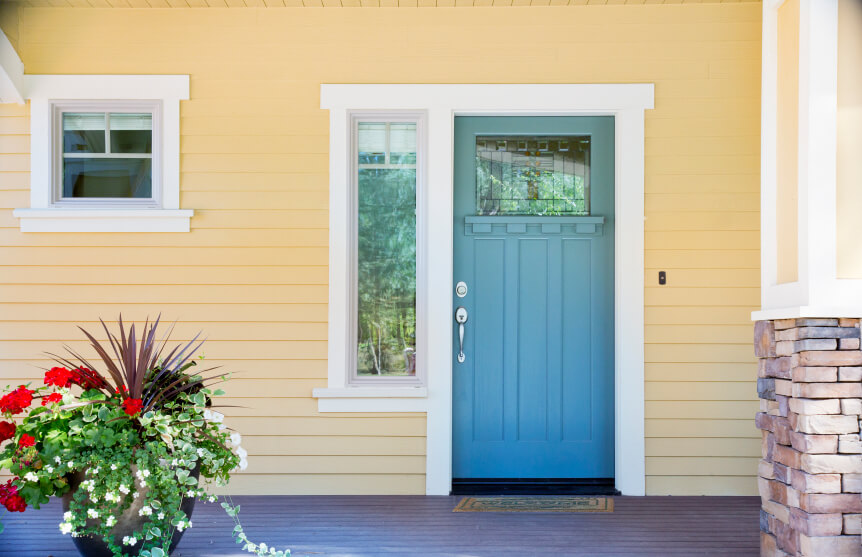
Frequently Asked Questions
How to Maintain Your Doors
Routine door maintenance helps extend its lifespan and ensures it operates smoothly. It’s especially important for wood doors or doors exposed to harsh weather.
Maintenance Tips
- Inspect Regularly: Check for signs of damage, warping, or sticking.
- Clean Surfaces: Wipe down wood, metal, and glass with appropriate cleaners.
- Lubricate Hinges: Use oil or spray to prevent squeaking and rust.
- Repaint or Refinish: Wood doors need a new coat every few years to prevent rot.
- Seal Gaps: Replace weatherstripping and check caulking annually.
- Test Locks and Hardware: Tighten screws and replace any worn parts.
Frequently Asked Questions
Topics to Explore
Door Replacement and Installation Costs
Door replacement costs can vary widely based on the type of door, materials used, and your region’s labor rates. Basic interior doors are more affordable, while high-end entry or patio doors with custom glass or smart locks will cost more.
Average Door Installation Costs
- Interior Doors: $150 to $400 per door
- Exterior Entry Doors: $400 to $1,000
- Patio Doors: $500 to $1,300
- Custom or Decorative Doors: $1,000 to $5,000+
Additional factors include the condition of the existing frame, any needed structural work, and add-ons like sidelights or security upgrades. Always get multiple quotes to compare pricing and ensure you’re getting a fair rate.
Frequently Asked Questions
Common Issues and Troubleshooting Tips for Doors
Even high-quality doors can develop issues over time. Some problems are easy fixes, while others may require professional help. Staying proactive helps prevent small issues from becoming costly repairs.
Common Problems
- Drafts or Air Leaks: Often due to worn weatherstripping or misaligned doors.
- Sticking or Swelling: Common with wood doors in humid climates.
- Squeaky Hinges: Usually caused by a lack of lubrication.
- Loose Handles or Locks: Hardware may loosen with regular use.
- Misalignment: Causes uneven gaps or difficulty latching.
Troubleshooting Tips
- Adjust hinges or strike plates to fix alignment issues.
- Replace old weatherstripping to block drafts.
- Use spray lubricant on hinges and locks.
- Re-tighten or replace screws in handles and locksets.
Call a contractor if the door frame is rotting, the door is sagging, or if locking issues compromise home security.
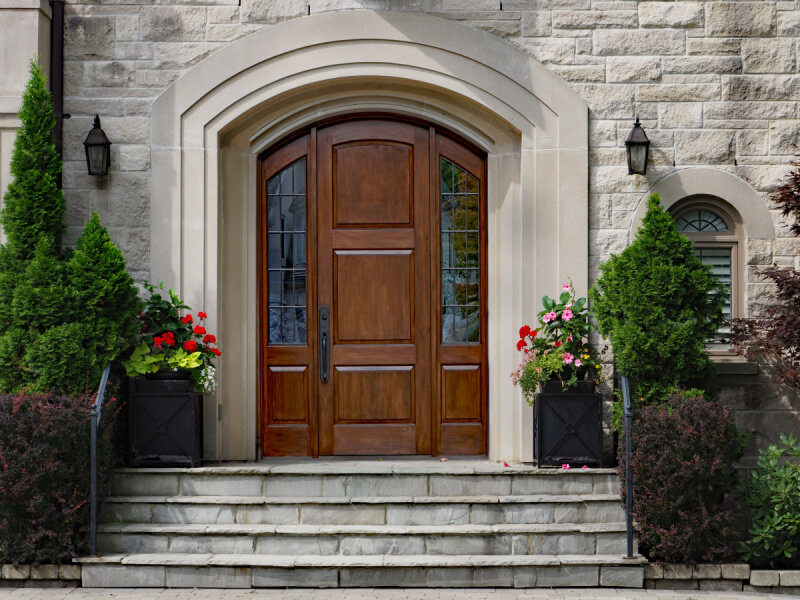
Frequently Asked Questions
What to Do After Replacing a Door
After your new door is installed, a few key steps can help ensure everything’s working properly and that your investment lasts. Good follow-up care can also protect warranties and prevent future issues.
Post-Installation Checklist
- Inspect the Work: Review installation with the contractor. Make sure the door opens, closes, and locks smoothly.
- Test Hardware: Check that knobs, deadbolts, and any accessories work as expected.
- Review Warranty: Understand what’s covered, including labor, materials, and finishing, and for how long.
- Maintain Documentation: Keep receipts, product manuals, and warranty information in a safe place.
- Plan for Maintenance: Set reminders to inspect weatherstripping, clean hardware, and refinish (if applicable).
You may also want to schedule a follow-up with the contractor after a few weeks to confirm everything has settled and no adjustments are needed.
Frequently Asked Questions
Topics to Explore
Ready to get your project started?
Let us find the best Doors pros in your area, then easily request quotes, book a contractor, and get the job done. It's that easy.

Homeowner Resources
Here are the top articles that homeowners found useful when planning their Doors project and navigating the contractor hiring process.
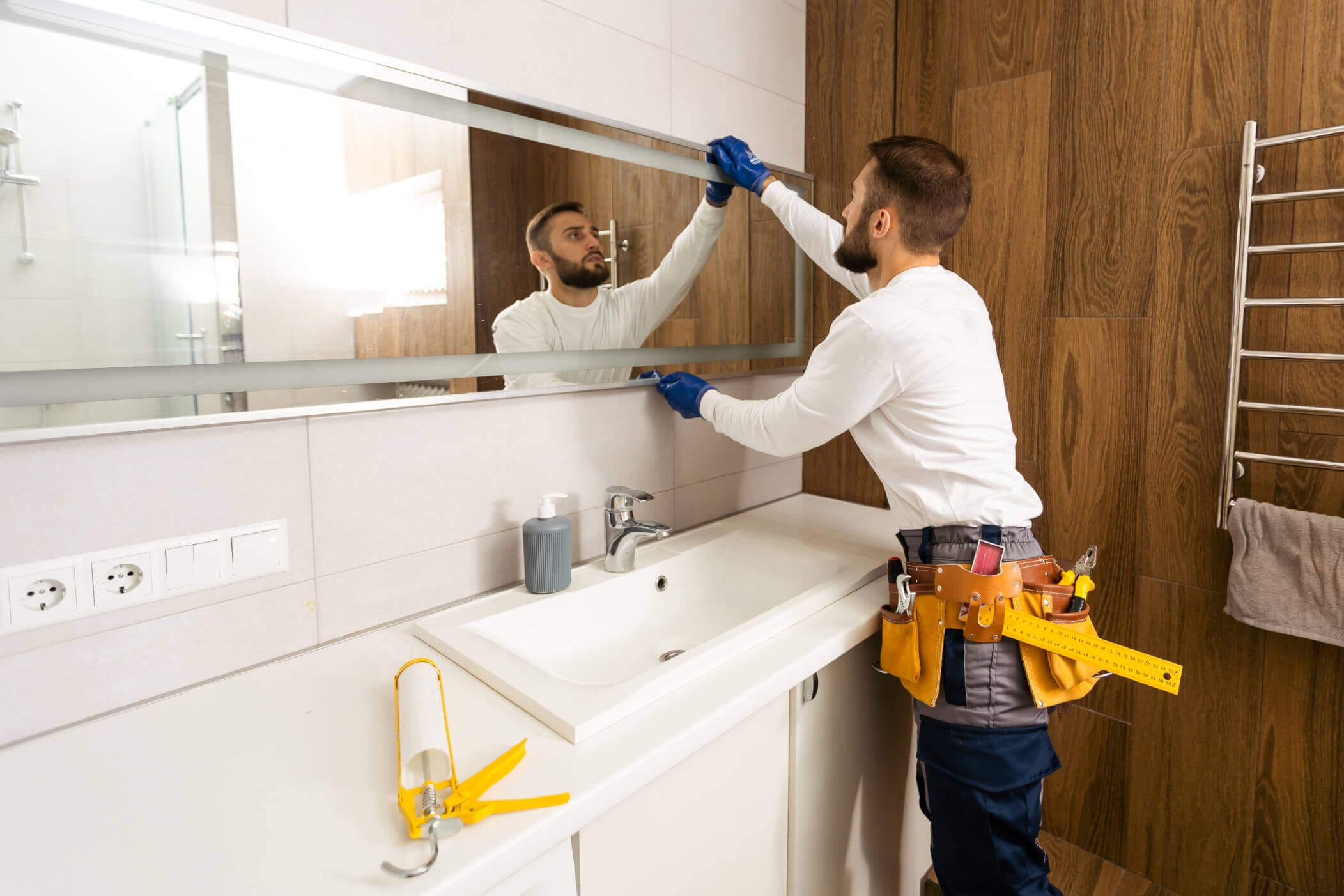
Real Stories, Real Success
See how our solutions empower homeowner projects and experiences.
